Antigua wildlife, part two: the beach and such.

Much of the most beautiful and fascinating wildlife on Antigua is at the beach. This is a tiny mollusk with mother-of-pearl and a spot of copper blue.
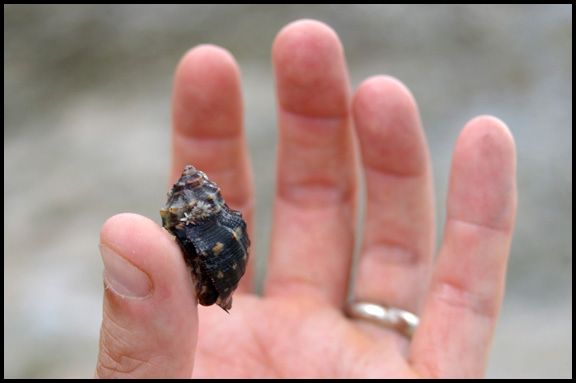
I picked up another shell and its occupant boldly crawled on my thumb.
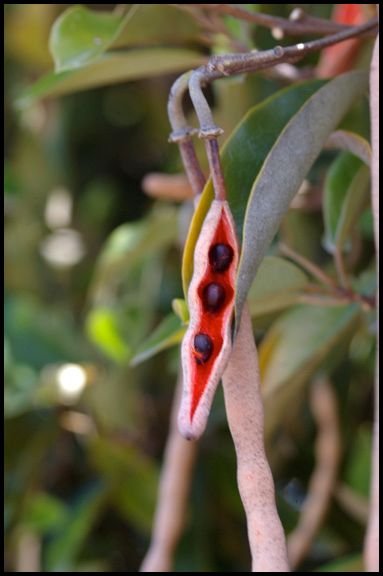
Along the dunes of one beach grew this lurid legume.
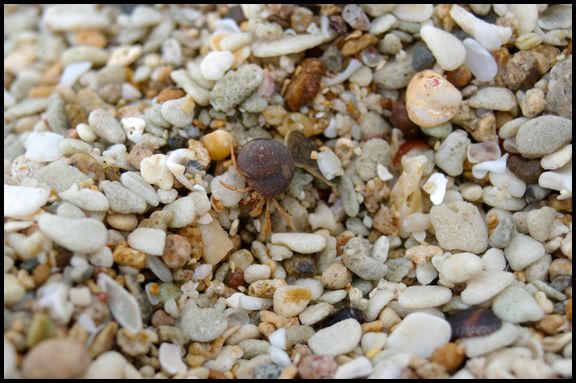
On one part of the beach there were small shells and pieces of coral instead of sand. Some of the shells were walking around.
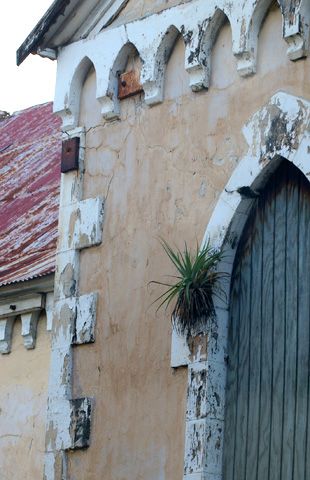
This epiphytic bromeliad is growing from an old church. Is there a word like epiphyte for growing on a church?
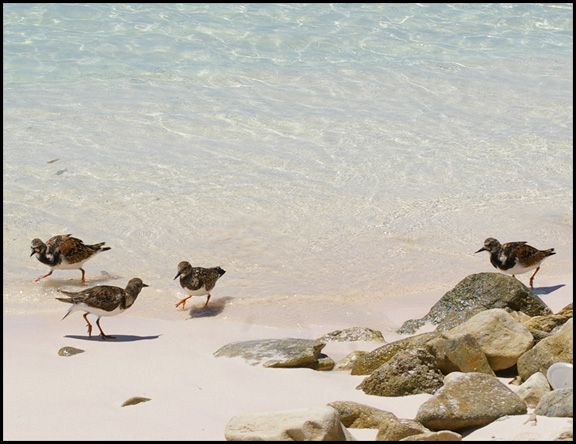
As long as I'm asking questions, does anyone know what these are? I'm pretty sure they are plovers but beyond that I'm stumped.
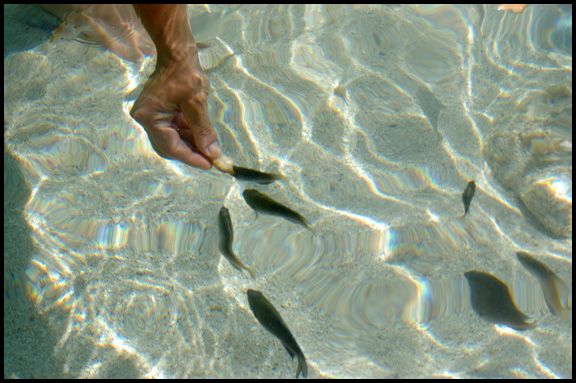
At Long Bay Beach there are friendly fish who take pieces of bread from your hand.
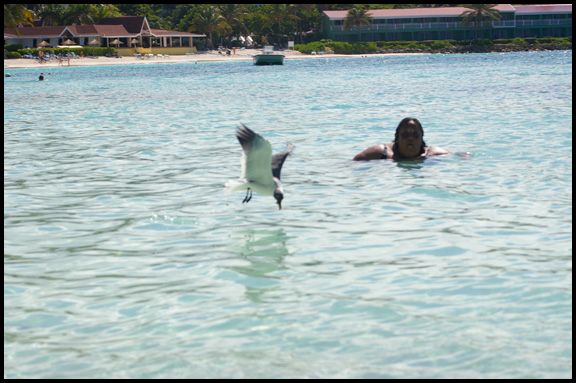
Afterward the laughing gulls swooped in to clean up.
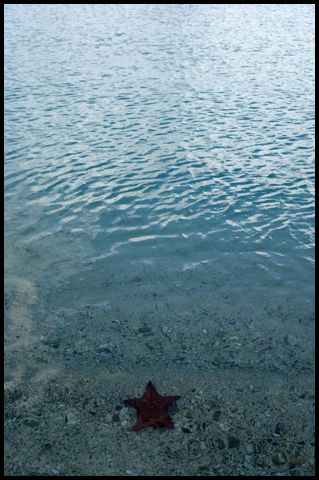
At Deep Bay beach we found large red starfish I mean sea stars.

They matched Alexis quite well.
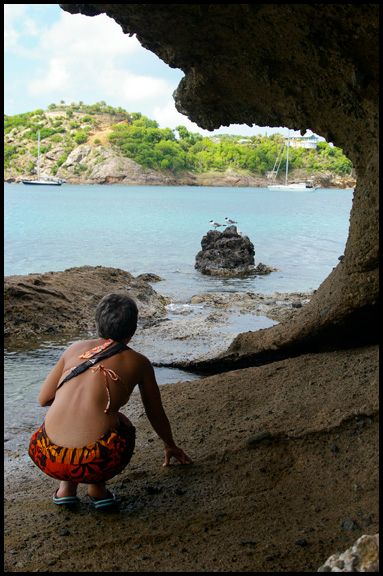
I think Alexis is trying not to scare the laughing gulls away from their favorite rock.
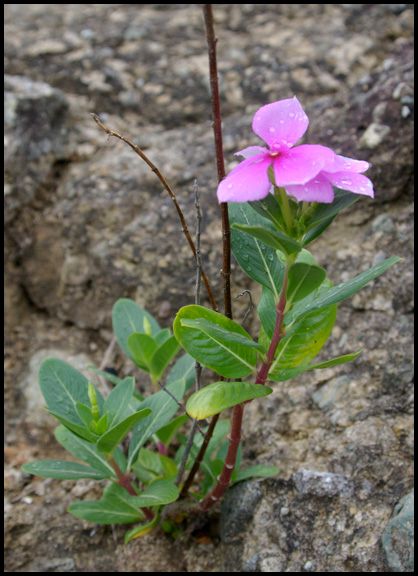
Up on the rocks above this beach were lots of this flower. I was wondering what it was until I looked at MY OWN POST from a year ago when they were identified as Madagascar periwinkle.
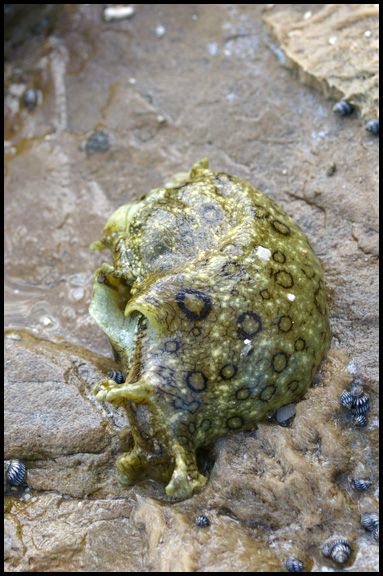
One of my favorite discoveries was this surprising fellow! On facebook and twitter I loudly proclaimed I had found my first nudibranch. I'm more careful here on El Jay, and checked with invertebrates, and our good friend drhoz set me straight. This is a sea hare, a different kind of sea slug altogether.
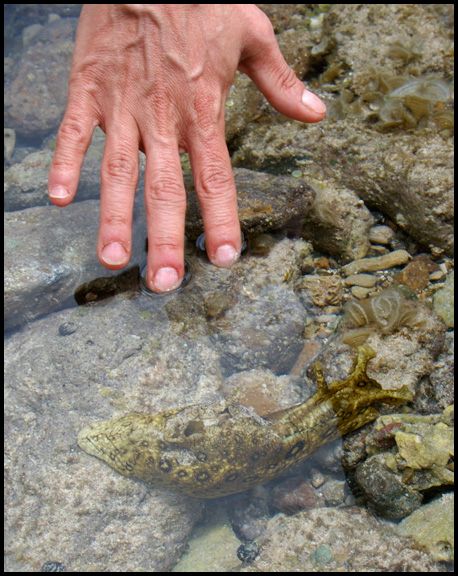
I did a little more investigating and decided it was most likely a spotted sea hare, Aplysia dactylomela. When I said the word "Aplysia," one of the guys with us (Earl, a neuroscientist) said "Oh! I know Aplysia! Some of my colleagues have won a Nobel from studying them." Apparently sea slugs have big simple nervous systems which make them attractive lab animals for neuroscientists. This trip was getting more interesting every day!
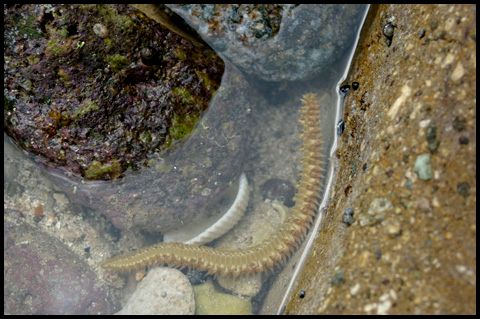
Here is a polychaete worm which frankly scared me. When I disturbed it, the bristles along its sides flared up and turned bright white. That's a pretty unambiguous message: "hands off." After a bit of searching, I decided this was probably a Green fireworm.
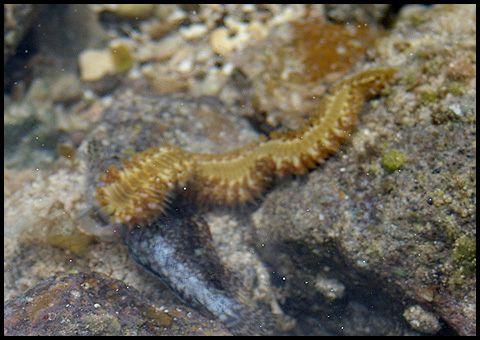
I found a dead fish in the tide pool and gave it a nudge toward the bristleworm. It came closer and started eating (I think.)
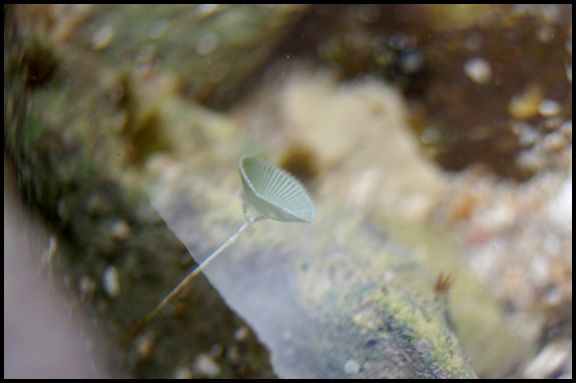
Finally, we found several of these, and I thought I must be seeing things. I miss seeing mushrooms so much that I'm imagining slender marine mycenas.
Fortunately the same good folks who identified my sea hare recognized this creature as an Acetabularia a single-celled alga of (it turns out) enormous size. (the "cap" is somewhat smaller than the diameter of a very small coin In fact, because this one cell of this photosynthesizer is so giant, it played an important part in the science of genetics and cell biology.
As I told my father in a letter this week: I have never outgrown playing in tide pools. I didn't even know it was an option.